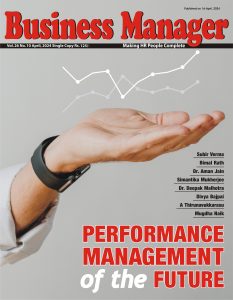A recent ‘Women and Work: How India fared in 2022’ report by IWWAGE showed a large percentage of women generally preferred working on fixed-location jobs over field jobs. Further, the majority of women are not willing to migrate even if the job is within their own state for a salary package between ₹12,000 to ₹15,000 per month.
IWWAGE, did an analysis on monthly trends of formal labour force jobs through EPFO data.
This analysis showed that in one-year period from October 2021 to October 2022, the monthly share of women’s registration has constantly remained lower than 28% despite the extent of job losses during the pandemic being higher for women. Hence, the report said, the jobs recovered in the year have not been evenly distributed.
According to the report, globally, the year 2022 was marked as the year of economic recovery from the effects of the pandemic and an elongated period of slow economic growth.
Also, IWWAGE mentioned that macroeconomic factors have also had a direct impact on women’s participation in the workforce. Even as the impact of the pandemic has been disproportionate the recovery from the pandemic has not been equitable.
However, the IWWAGE report also cited CMIE data which stated that the unemployment rates touched a high of 8% towards the last quarter of the economic year.
This meant, even as the growth rates improved as compared to last year the decline in the number of unemployed has not been significant.
Also read: Unemployment rate dips to 7.2% in October-December: NSSO
Sona Mitra – Principal Economist – Initiative for What Works to Advance Women and Girls in the Economy (IWWAGE) said that, “The pandemic has not only disrupted global growth but also disproportionately affected women’s participation in the workforce. The 2022 edition of our ‘Women and work’ trends report reveals how exclusion from the workforce may be permanent for many women, and fewer are returning to work.”
Mitra added, “Access to enablers such as safety, relevant skilling modules, improved digital access, and gender-friendly workplace infrastructure are vital for women’s participation in the paid workforce. By reducing the ‘time poverty’ that women experience, these enablers create an ecosystem for women-led growth and development.”
Giving a view of attitudes towards women’s work, IWWAGE cited that FSG interviewed 6,600 working-age women from households with low income in 16 cities in 14 states in India.
The study showed, women still need to secure permission from men. About 84% of women need to secure a family member’s permission before deciding to work. The research pointed out that, the family member identified by the woman as having the most influence in this decision is referred to as the key decision maker, who is generally male.
Although more than 30% of women have had some level of vocational training, a majority of the women somewhat about 85% of them received training in gendered areas of work such as sewing/ tailoring (62%), beating/make-up services (16%), and Mehendi application (7%).
90% of the women working or seeking jobs do it for key factors such as to support one’s own and one’s family expenses. While supporting a child or children’s education is an important driver for 40% of working women.
Additionally, the report said, 88% of women believe that one could work outside the house after having a child. 52% of women believe that mothers with children under the age of 6 could work outside of the home, and, in contrast, 61% of key decision-makers believe that women with young children (below the age of 6) should not seek employment outside of their homes
There is a low margin of women, 20% of them, ready to stop working if they did not have financial constraints. But 78% of them intend to work until retirement age or as health permits.
Further, the data revealed that most women are willing to work in jobs from a fixed location (e.g., 72% are willing to work from an office, and 52% are willing to work from a mall or store), compared to jobs that require daily travel (e.g., only 22% are willing to work in a job that requires them to go from door to door).
Lastly, the findings said, 1 in 2 women is either working in a job or seeking one. Notably, only 15% of women never want to work in a job, of whom 29% are older than 44. 64% of women strongly believe that in order to be self-reliant, it is important to work. 52% of working women say that they enjoy working, and 90% of working women overwhelmingly agree that working is the right thing to do.
Stay connected with us on social media platform for instant update click here to join our LinkedIn, Twitter & Facebook



































